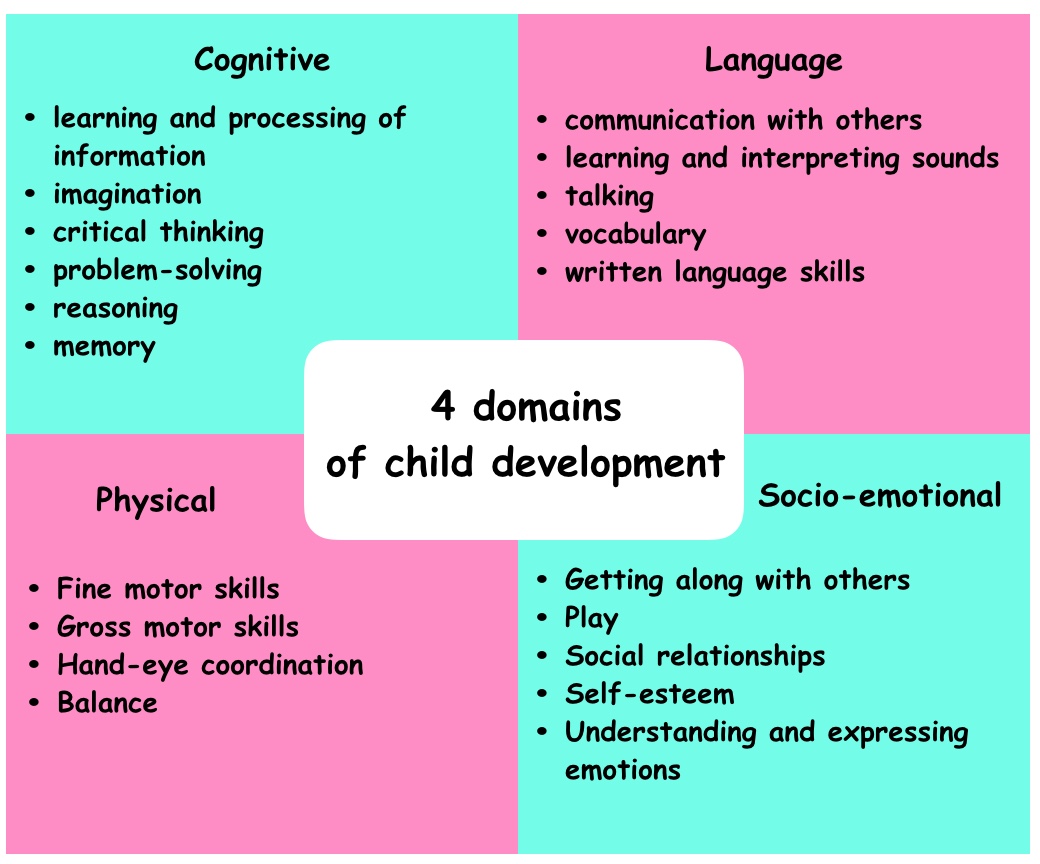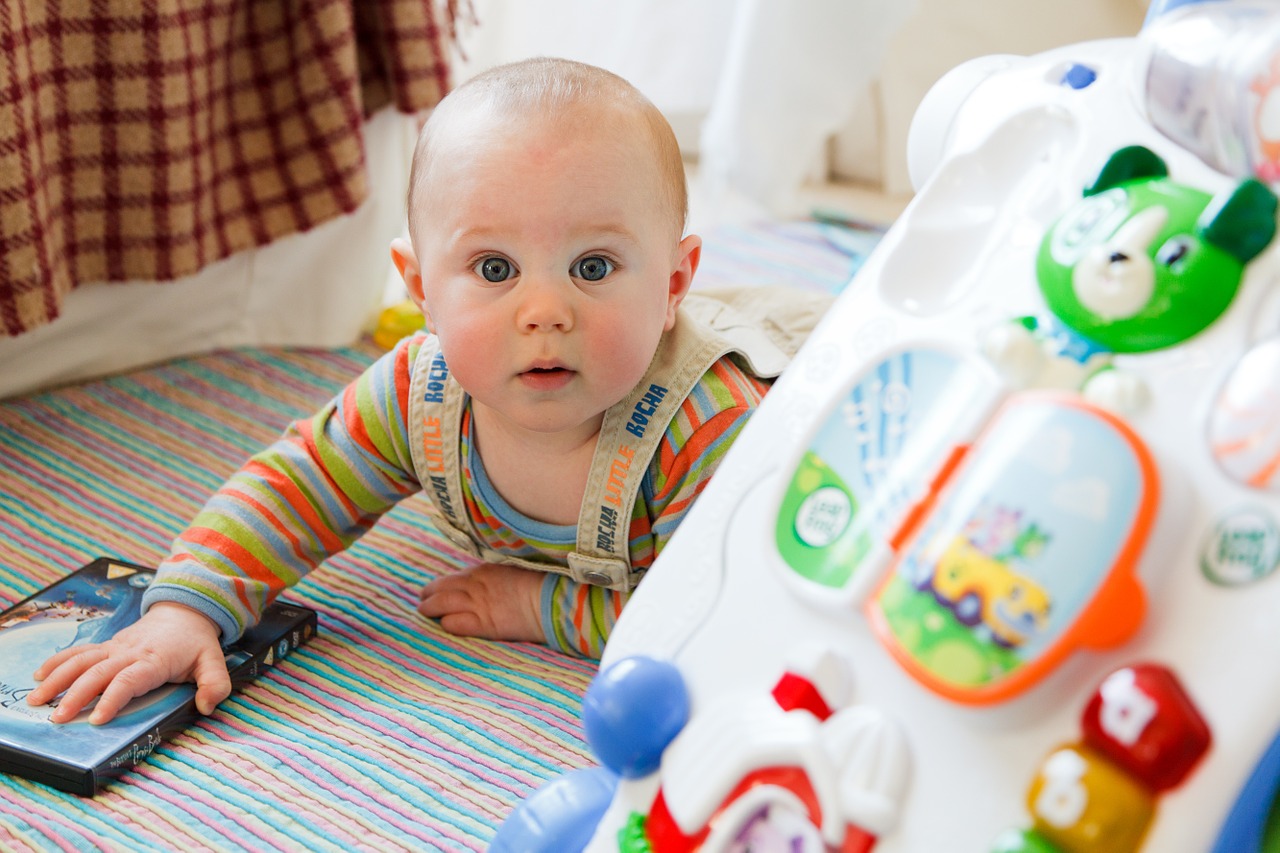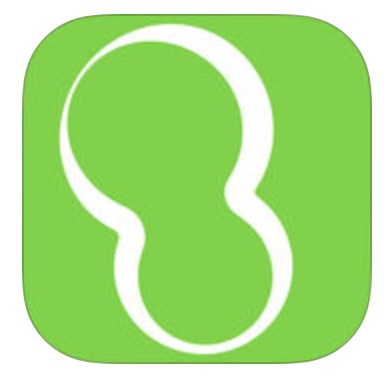In the first module of this course, we discussed the four domains of child development: cognitive, language, physical, and socio-emotional. Here is a recap.
We will now continue to explore your child’s developmental progress in the next three months of life, from 1 to 4 months of age.
Cognitive
Your baby’s cognitive development is increasing exponentially! As your baby learns more and more about how the world works through his or her senses, your baby is also becoming more capable of interacting with that world. Babies around this age will turn their heads to look at things that capture their attention, such as flashing colors, changes in lighting, or even people such as yourself walking around the room. Babies will also be more attracted to human voices, and turn their head in order to listen to interesting sounds more closely. Try talking more to your baby, because he or she will try to pay attention and might even respond with a smile or babbling sound! Babies from one to four months will also try to interact with their world however they can. They might express an interest in new and unfamiliar objects by reaching, for example, towards the sounds of toys that make noise, or putting things into their mouth. All this points toward your baby becoming a more intellectually curious individual.
Language
Still, you won’t be having deep intellectual conversations with your baby just yet. Your baby will most commonly make cooing or gurgling noises; if you are eagerly waiting for your baby to say his or her first word, you will probably have to be patient for a few more months! You might hear your baby begin to babble, which means that your baby might produce articulate sounds such as “a-ga” without producing recognizable words. Nonetheless (and perhaps unfortunately for you), a baby’s primary mode of communication at this age is through crying: crying will be how your baby tells you when he or she is hungry, uncomfortable, or just wants to get your attention. Still, don’t let this hold you back from directly interacting with your baby. Your baby will still respond to you, for example, laughing when you tickle him or her, smiling back when you smile, or gurgling when you talk.
Physical

When your baby was first born, you may have noticed that your baby did not have the best coordinated control over his or her body. Your baby is gradually getting better at this over time! By four months, infants are often able to lift their heads and look in both directions. Their eyes, once unfocused, are now able to follow a moving object or caregiver, and they will hold objects, like toys, in their hand more firmly. Finally, babies will start moving their body more, moving their arms and legs in a squirming fashion and kicking their legs out. Babies might not be able to walk yet, but stay tuned. For now, they may start rolling over from their tummy to back, or using their arms to push up from their tummy while keeping their head supported.
Social and Emotional
You are still the social and emotional center of your baby’s world. Around this age, your baby will enjoy being gently tickled or jiggled, and you can start trying to play games with your baby, such as peek-a-boo. Your baby might even start crying if you stop! Thankfully, your baby will be able to recognize your voice as familiar, and you will have easier time than others soothing your baby when he or she is upset. Finally, you might notice your baby developing a better awareness of the emotions of others around them. Your baby is likely to smile spontaneously or smile when you smile. This means your baby can tell when you are sad or angry too, so try to keep your best foot forward.
Conclusion
As a reminder from the previous module, remember that developmental milestones are meant to give an estimate of when a child acquires a certain skill. Ultimatly, every child is unique, and not following the timeline of developmental milestones perfectly is normal to a certain extent. This in mind, if you still find yourself worried about the pace of any aspect of your child’s development or suspect any abnormalities, you should always feel free to seek personalized medical advice by calling your doctor. We hope that these discussions on development will be not a worry for you but a cause for excitement as you learn more about how your child develops.
Supplementary Material
For additional information and resources, take a look at the following.
1. Here is another perspective on your baby’s development from one to three months as told by Dyan Hes, medical director of Gramercy Pediatrics in New York City. This video also contains additional information that we did not discuss, related to your child’s feeding habits around this age.
2. We cannot overemphasize how important it is to interact with and play with your baby at this age. Your baby is learning from you and about its world, at an exponentially rapid pace! Here are 20 ideas for fun and silly games that you can play with your baby.
3. Ovia Baby Development Tracker is an iPhone app that allows you to do personalized tracking of your baby’s developmental milestones, while simultaneously giving you access to a library of developmental resources and a community of parents in the same shoes as you. It’s also free! You can try it out here.

4. If you haven’t already from our previous module on developmental milestones between 0 to 1 month of age, check out the Child Mind Institute’s “Parents Guide to Developmental Milestones” here. This will give you some more perspective on how to view developmental milestones, when to be excited and when to be concerned.
References
Centers for Disease Control and Prevention (2017). Important Milestones: Your Baby By Four Months. (n.d.). Retrieved from https://www.cdc.gov/ncbddd/actearly/milestones/milestones-4mo.html.
Mayes, L. C. & Cohen, D. J. (2002). The Yale Child Study Center Guide to Understanding Your Child: Healthy Development from Birth to Adolescence. Boston: Little, Brown, and Company.
University of Pittsburgh Office of Child Development. Developmental Milestones: Birth to 12 Months. (n.d.). Retrieved from http://www.ocd.pitt.edu/Files/PDF/Foster/27758_ocd_DM_b-12.pdf